How to Restore a Brownstone Facade
In the first half of the 19th century, a growing urban middle class was looking for something more distinguished than the usual brick facades. Marble, granite, and limestone were too expensive to ship to Brooklyn. Brownstone, a type of sandstone found in nearby New Jersey, was easy to transport and more affordable. 142 Underhill Avenue The brownstone was…
In the first half of the 19th century, a growing urban middle class was looking for something more distinguished than the usual brick facades. Marble, granite, and limestone were too expensive to ship to Brooklyn. Brownstone, a type of sandstone found in nearby New Jersey, was easy to transport and more affordable.
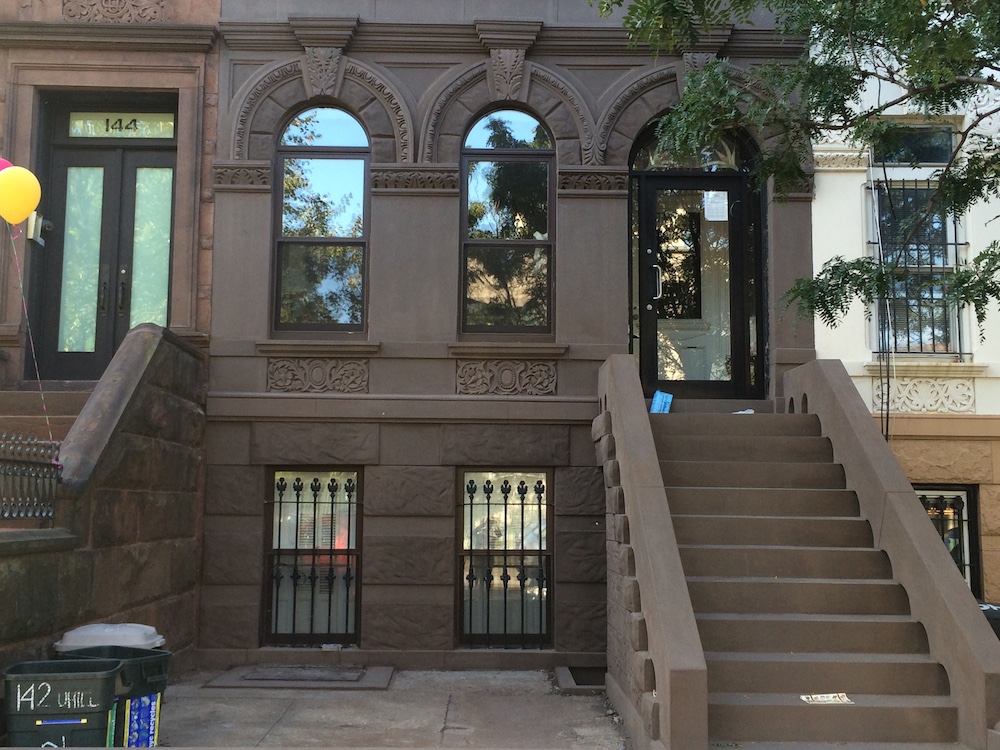 142 Underhill Avenue
142 Underhill Avenue
The brownstone was cut by expert stonecutters into blocks less than a foot thick, which were added to the front of brick buildings. Masons could then carve intricate ornamental designs into the stone. This type of home became so iconic that New Yorkers tend to use the word “brownstone” to refer to any townhouse or row house. The relative softness that makes brownstone easy to work with, however, leaves it prone to erosion and decay, and the facades of these buildings are often in need of restoration. So how do you restore a brownstone? We asked the specialists at Excellent Contracting LLC how they go about returning a crumbling classic to its former beauty.
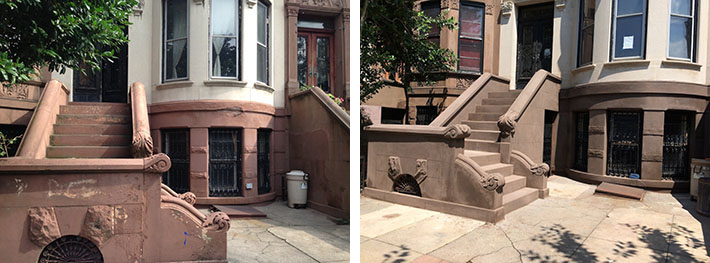 245 Lincoln Road, before and after
245 Lincoln Road, before and after
Step 1: Get permission
Years ago, repairs to brownstones were not as carefully monitored, and building owners looking for cheap and easy fixes were in danger of inflicting lasting damage on architecturally significant buildings. New York City’s Landmarks Preservation Commission has since established guidelines to protect these buildings. Repairs done within historic districts must be done with an eye to historic accuracy, and applications for restoration permits must be filed with the LPC.
In some cases, public hearings are also required. Getting approval involves submitting information on the proposed restoration process, the materials to be used, and the color of the finish. Companies doing this specialized work are vetted and asked to submit extensive information about their expertise, as well as projects they have completed.
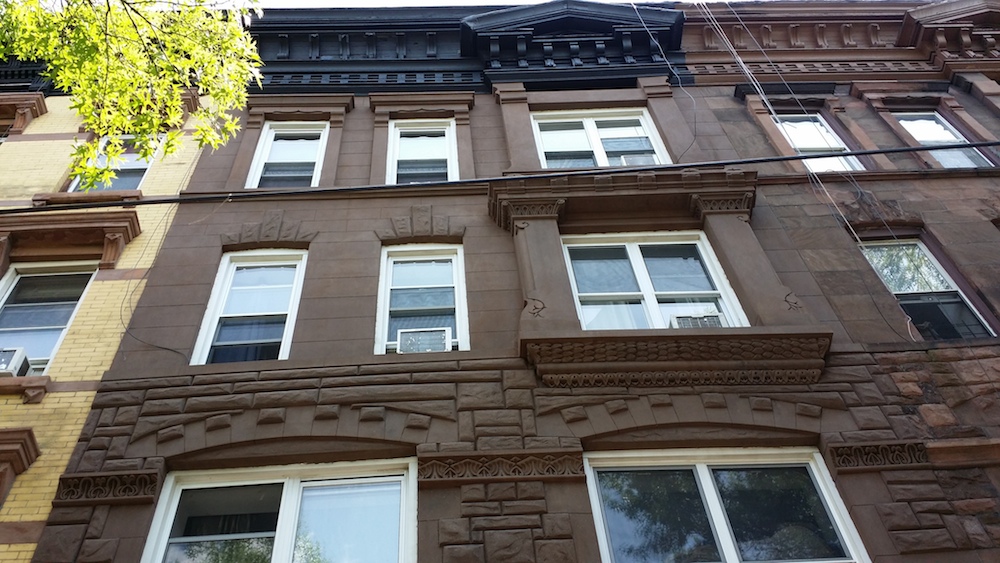 363 5th Avenue
363 5th Avenue
Step 2: Remove the damaged top layer
Brownstone is formed from grains of sand that have been pressed together over millions of years, and water can easily infiltrate it. A combination of hard freezes and thawing eventually leads to decay. After documenting the building’s original details, the surface of the brownstone is chipped off until they reach the solid, undamaged base.
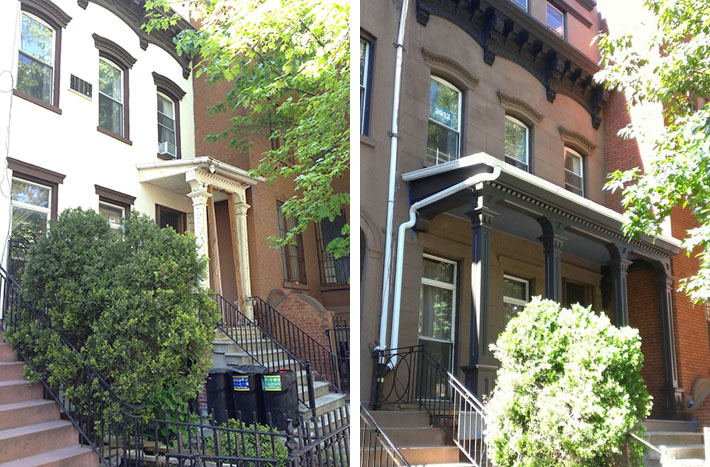 360 Washington Avenue, before and after
360 Washington Avenue, before and after
Step 3: Build the facade back up with layers of cement
First comes a slurry coat, mixed thinner so it can infiltrate the pores of the rock. Later comes the scratch coat, still gray, and grooved to provide a better bond with the top layer. The scratch layer is where the characteristic historic details are recreated. This stucco-concrete mix is formed into the brownstone’s original shape and then left to cure for a minimum of four to six weeks in order to make sure that its permeability is at a minimum, and the base is as strong as possible.
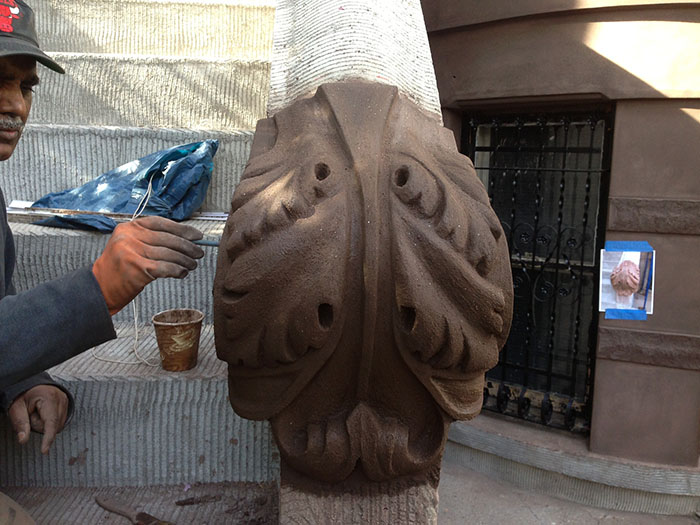 Getting the color right
Getting the color right
Step 4: Apply the final brownstone coat
After the curing process is completed, the final brownstone coat is applied, making sure that the texture and color match the original stone. Once this coat has been applied, the finer details such as ornaments and flowers are added. The work is done by hand, using levels, trowels, sponges and other tools of the trade.
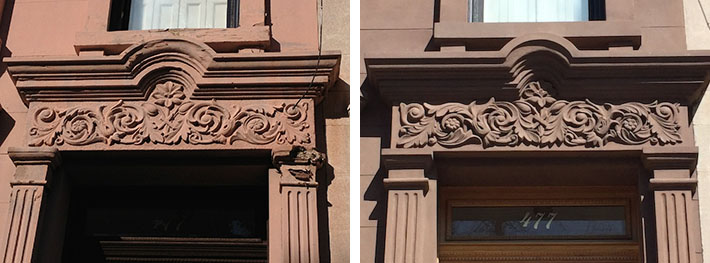 477 13th Street, before and after
477 13th Street, before and after
It’s a detailed process that can produce remarkable results. A well-restored brownstone facade has the distinguished look synonymous with Brooklyn, one that people all over the world recognize.
For more information on restoring your Brooklyn brownstone, visit the Excellent Contracting LLC website.


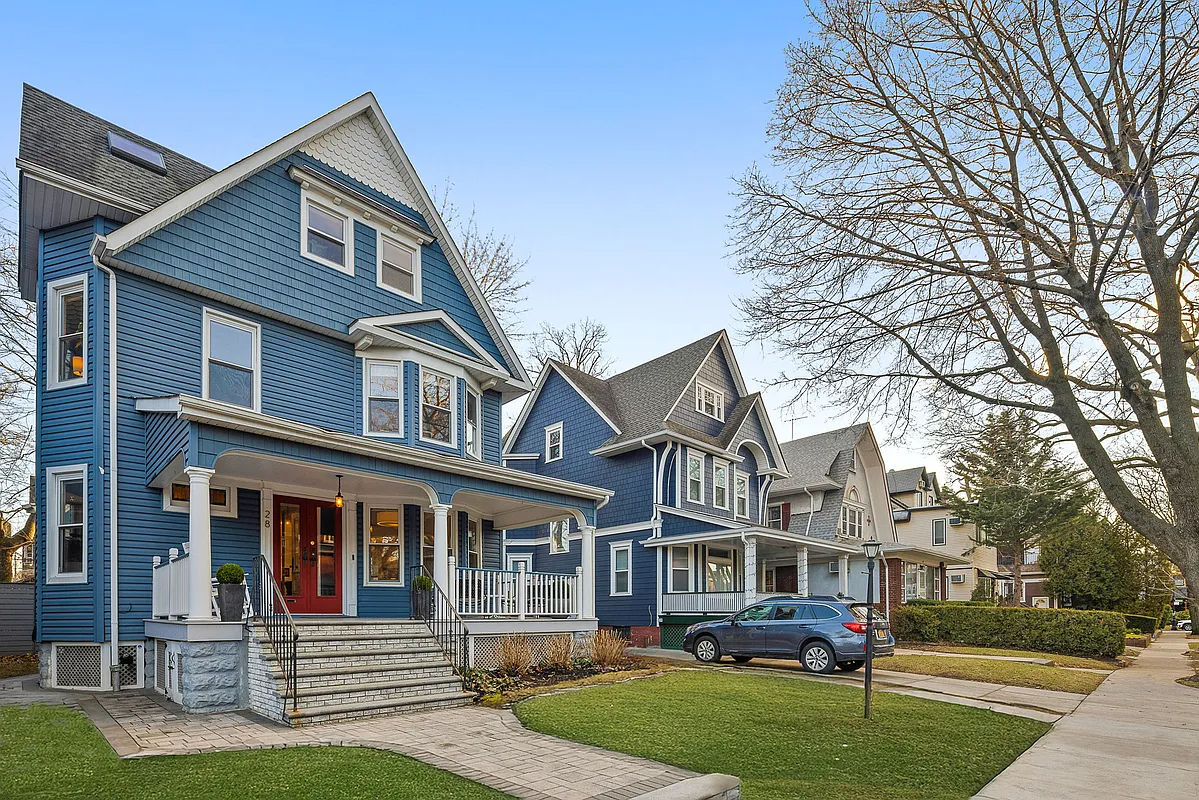
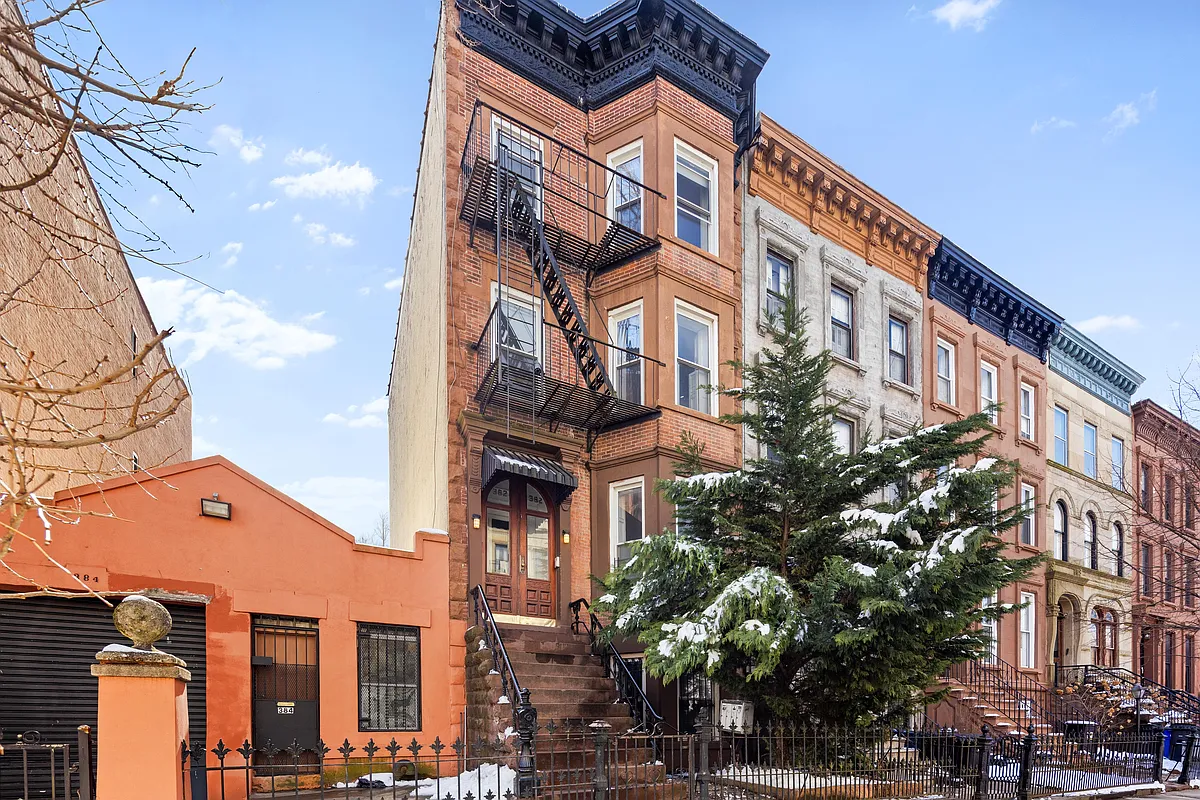

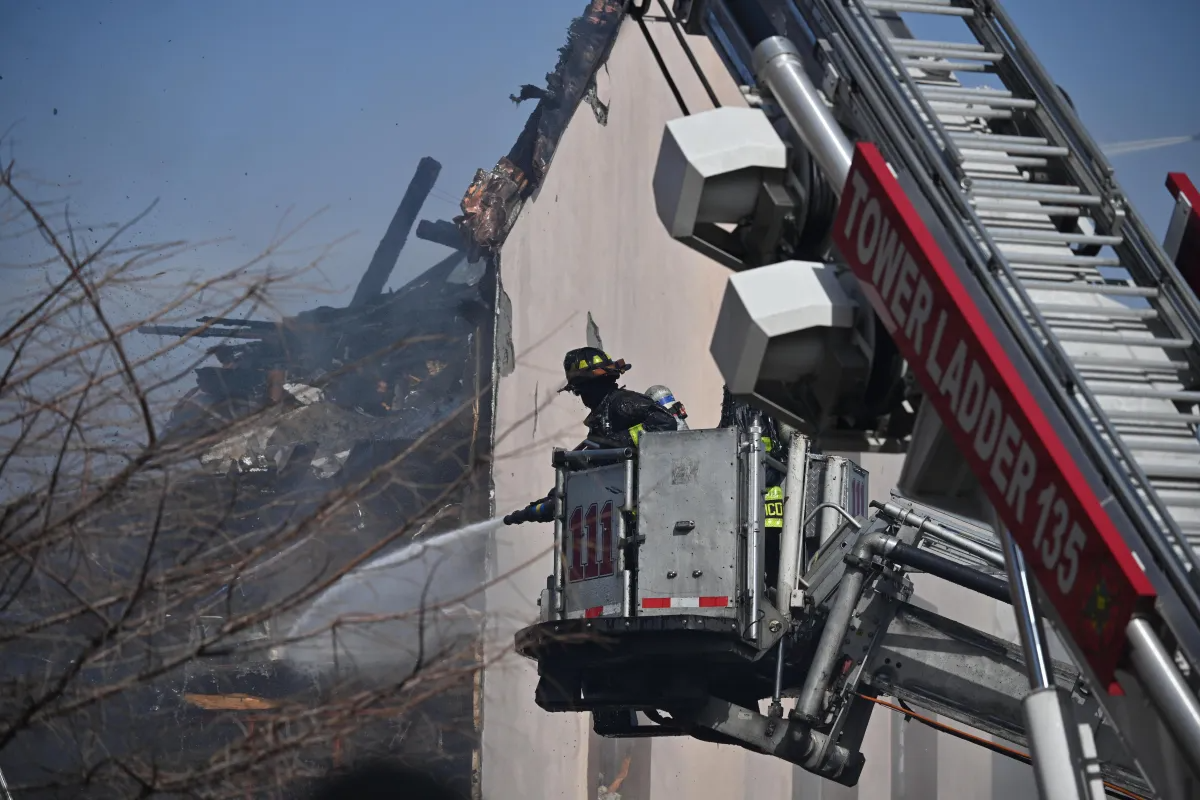




Comments